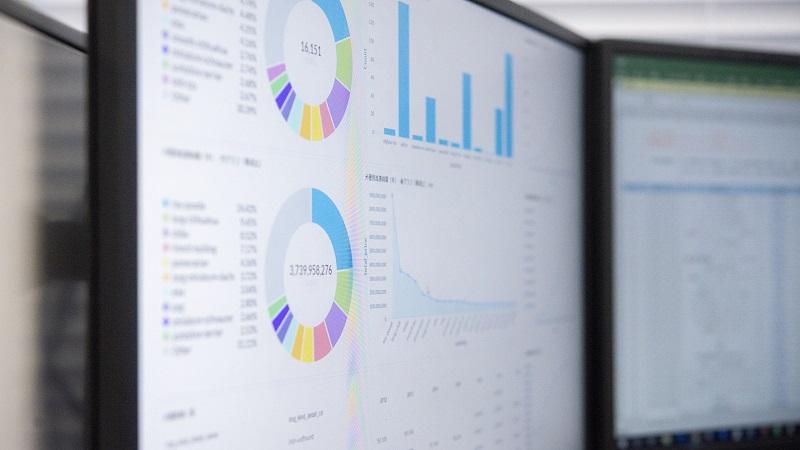Watchdog urges stats professionals to be ‘proactive’ in ensuring information they publish is not used inappropriately
Credit:Pxfuel
Government statisticians working on health and social care should be “proactive” about reducing the risk that the data they publish is misused, the UK’s stats regulator has said.
During the years since the onset of the pandemic, there has been an “increased public appetite for data and statistics about Covid-19,” resulting in government bodies that produce stats looking for new ways to meet the public’s needs and communicate with a greater range of users, the Office for Statistics Regulation said.
The general public has accessed government dashboards and other statistics, especially regarding Covid-19, for a variety of reasons, in numbers that were unprecedented before the pandemic.
In a report yesterday, the OSR said officials should learn from this by continuing to create more innovative ways of communicating stats to a wide range of users – but also by minimising the risk of them being accidentally or deliberately misinterpreted.
For example, the regulator found instances in which figures published by the UK Health Security Agency on Covid infection rates by vaccine status had been used to support anti-vaccine misinformation in podcasts and online.
The report said: “Users had to work quite hard to find official figures and that understanding them was not easy for all users due to the technical nature of the reports they were published in.”
Related content
- Regulator urges government to ‘cement statistical successes of the pandemic’
- Interview: UK national statistician on how data has helped the PM – and the public – in coronavirus response
- Government statisticians must be ‘able to raise issues if data is used misleadingly’, trade body warns
It said producers of statistics should therefore make it easier to find and understand objective, clear information; respond to public debates; and consider the risks associated with the publication of their statistics in advance.
They could also use blogs or explainers to communicate technical content in a way that is easily understandable for a general user, or draw on expertise from across the analytical, scientific and communications professions to decide on the best approach.
Communication is one area where government bodies that produce and publish statistics can learn lessons from the pandemic, the OSR has said in its second annual report on the subject – along with transparency, and barriers to data sharing.
The influx of people accessing statistics to make life decisions, out of general interest, and to enhance their understanding of topics of public interest was a “big change” for statisticians.
According to the report, many producers were used to communicating with a completely different type of audience, mainly other government officials, experts, or academics, the OSE said.
As a result of developing this understanding of the varied users of statistics, some producers have identified that one product does not necessarily suit all. The report identified three themes emerged from our evidence, focused on three different mediums for communicating statistics: dashboards, reports, and social media, specifically Twitter,” the report said.
‘Engaging and effective’
During the pandemic, a phenomenon emerged of government and non-government statisticians using personal Twitter accounts to communicate health-related statistics. These accounts gained large followings, which “demonstrates that there is a public appetite for access to a reliable, expert voice on statistics”, the OSR said.
These “tweeting statisticians” were able to publicise statistics to a broader audience; summarise and explain stats succinctly; debunk misconceptions and answer user questions; and humanise statisticians’ work, amongst other benefits, according to the report.
However, it found that statistic producers did not necessarily have the time or skills to run these Twitter accounts and would appreciate more support and guidance dealing with aspects of social media like challenging questions and comments.
The OSR “would like to see guidance on running a personal Twitter account and examples of good practice provided for producers by the analysis function central team to support this engaging and effective way of communicating with the public about statistics”. The analysis function is the cross-government network of officials involved in generating and disseminating analysis across government and to the public.
The report also called on the analysis function to publish more practical support and research on what makes an effective dashboard, the use of which increased during the pandemic. There were “astonishing” numbers of visitors to the UK Covid-19 dashboards during peak times, it said. Among the many benefits for users and producers, dashboards can be more engaging, support the release of underlying data, and can result in a more efficient process, the OSR said.
The regulator said recently updated dashboard guidance from the analysis function’s central team was a “helpful resource”, but could go further by providing user research, as well as practical support on building dashboards and guidance on user testing. It can be “challenging to present sufficient insight, context and guidance on appropriate use alongside statistics in a dashboard”, the report said.
Other areas of needed improvement for the next year include transparency and removing data sharing barriers. OSR launched its campaign for intelligent transparency in statistics and data last year in response to recurring transparency issues found through their casework. The guide the department published in February has also reportedly supported producers as they work to achieve intelligent transparency through equality of data and statistics access; enhance understanding of economic and societal issues through data and statistics; and employ analytical leadership.
Last year’s report highlighted a number of barriers to data sharing, which the OSR said still exist. Primarily, the need for consistent guidance on managing legal and information governance issues, as well as reluctance to share data, still persist.
Ed Humpherson, the OSR’s director general for regulation, said: “This report highlights the key issues for health and social care statistics, to ensure ongoing analytical success from everything that has been achieved and learned during the pandemic. In particular, collaboration between producers and innovative approaches to the communication of statistics are two areas where we have seen many excellent examples during the pandemic.”




